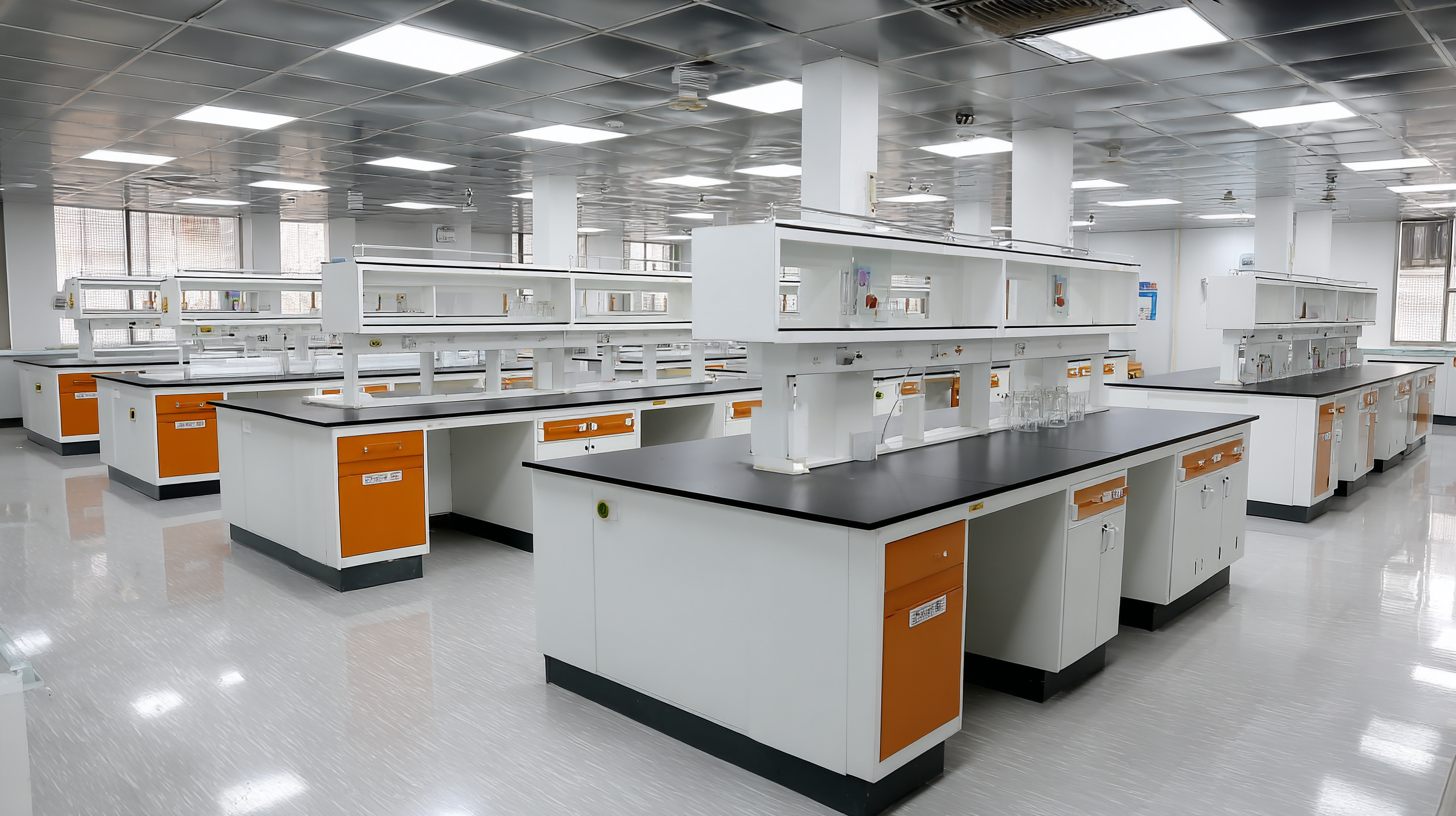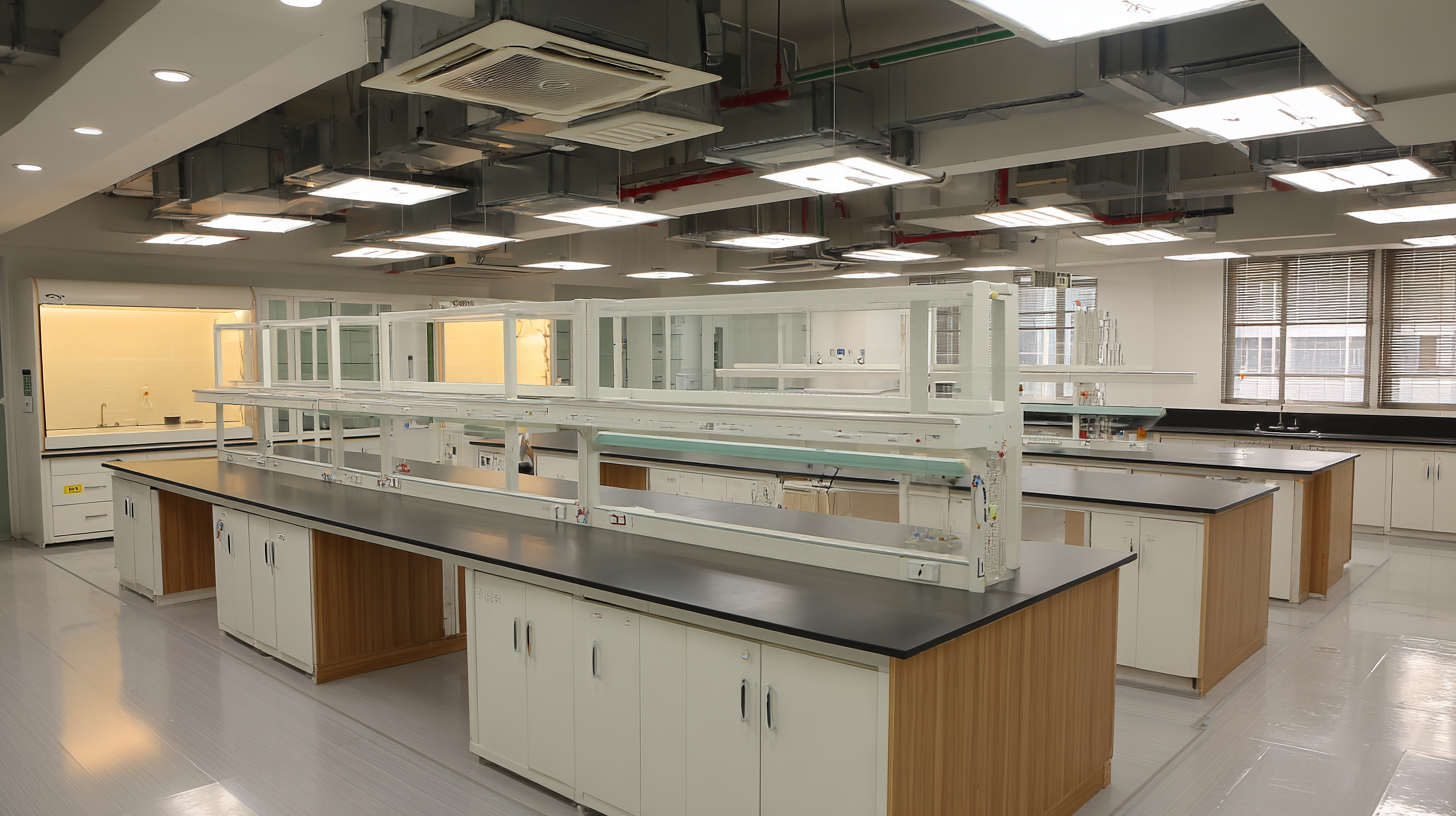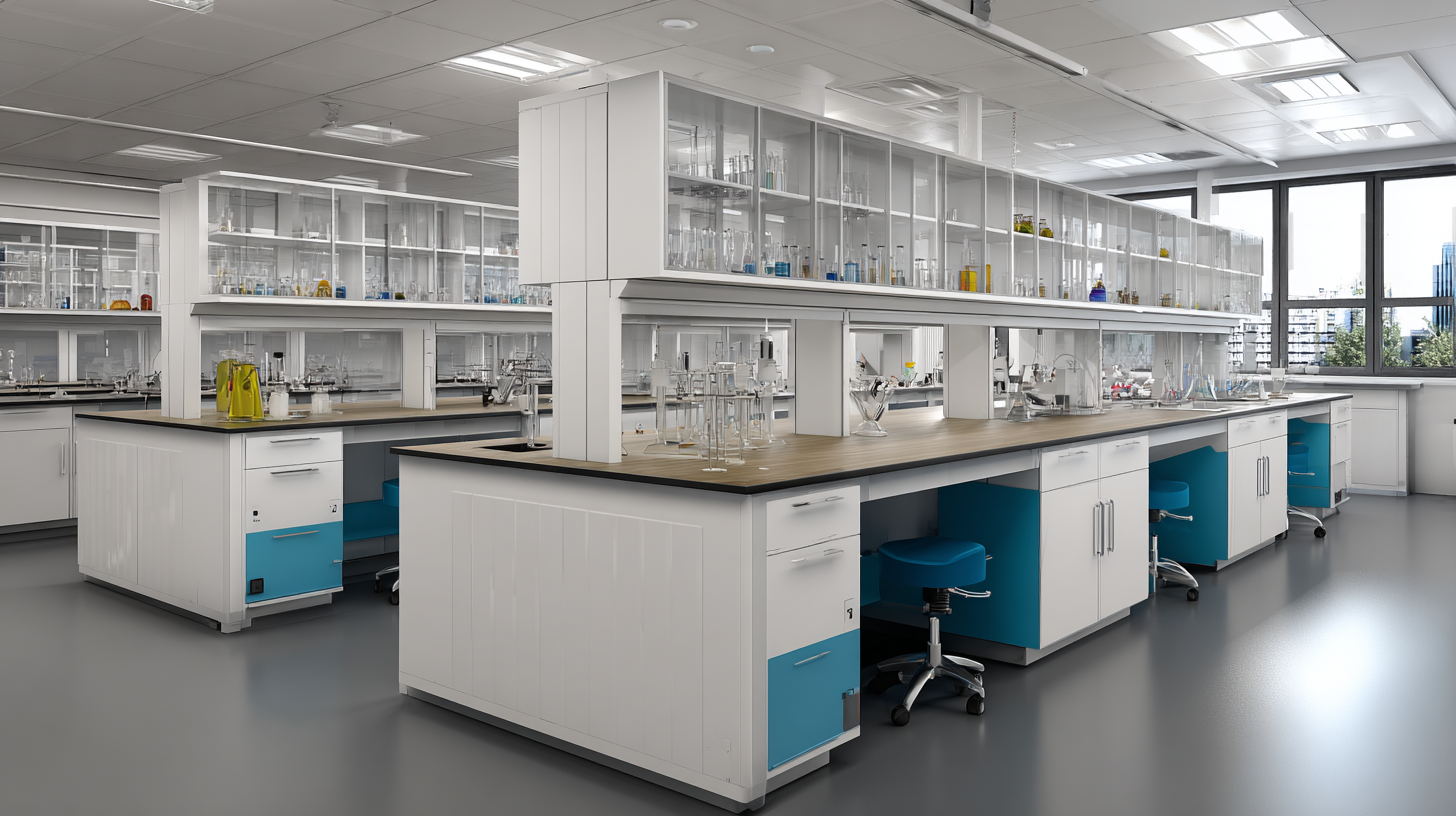In the realm of scientific research and education, the significance of selecting the right Chemistry Laboratory Furniture cannot be overstated. According to a report by MarketsandMarkets, the global laboratory furniture market is projected to reach $5.1 billion by 2025, reflecting the growing investment in laboratory infrastructure. Properly designed laboratory environments not only enhance safety and efficiency but also support intricate research processes. As laboratories evolve to meet the demands of innovation, the choice of furniture becomes critically important. This ultimate guide will explore the essential aspects to consider when selecting Chemistry Laboratory Furniture tailored to your specific needs, ensuring that your workspace optimally supports both functionality and safety in the bustling world of chemistry research.

When selecting chemistry laboratory furniture, it is essential to understand the unique requirements that accompany a safe and efficient workspace. Recent reports indicate that up to 30% of lab accidents are due to inadequate furniture design and safety features. Functional elements, such as chemical-resistant countertops and secure storage for hazardous materials, are crucial in preventing accidents and ensuring compliance with safety regulations.
Moreover, the importance of comfortable seating and accessible layouts cannot be overstated. A study found that ergonomic lab environments significantly enhance productivity and reduce worker fatigue by as much as 20%. This is particularly critical for laboratories that prioritize inclusivity; designing accessible laboratory spaces not only supports compliance with regulations but also fosters a more diverse workforce. The recent unveiling of a student-designed chemistry lab in Birmingham exemplifies the innovative approaches being taken to address these needs, incorporating feedback from future users to ensure the furniture meets both functional and ergonomic standards. Investing in the right laboratory furniture not only enhances safety and usability but also contributes to the overall success of research endeavors.
When selecting high-quality laboratory furniture, several key features should be prioritized to ensure a functional and safe working environment. First and foremost, durability is essential. Laboratory furniture must withstand the rigors of daily use, exposure to chemicals, and frequent cleaning. Materials such as stainless steel or chemically resistant laminates offer longevity and easy maintenance, providing peace of mind for lab personnel.
Another critical aspect to consider is ergonomics. Well-designed laboratory furniture should promote comfort and accessibility for all users, allowing for a smooth workflow. Height-adjustable tables and chairs can accommodate a diverse range of users and activities, reducing the risk of strain or injury. Additionally, storage solutions should be strategically integrated into the design to keep essential tools and materials organized and easily reachable, minimizing clutter and enhancing efficiency. These features collectively contribute to a productive lab environment, fostering innovation and safety.
As laboratories evolve, the emerging trends in laboratory design for 2025 emphasize the integration of advanced technologies and the push for innovative spaces that enhance productivity. With the ongoing shifts in lab budgets and a hesitance to purchase new equipment, there's a growing desire to invest in projects that leverage these technologies. For instance, artificial intelligence and automation are not just buzzwords but pivotal forces reshaping laboratory environments to optimize workflows and data management.
In parallel, the semiconductor industry is witnessing significant transformations, especially in regions like India that are facilitating foreign investments. These investments not only boost the local economy but also drive high-tech lab infrastructure development, aligning with the trend of more sophisticated laboratory settings.
As laboratories gear up for 2025, selecting chemistry lab furniture that can accommodate evolving technologies and promote a collaborative atmosphere will be critical. This means choosing adaptable furnishings that support both current needs and future innovations, paving the way for a more integrated approach to laboratory design.
When selecting laboratory furniture, understanding essential safety standards and regulations is crucial. Proper laboratory furniture must comply with guidelines established by organizations such as the Occupational Safety and Health Administration (OSHA) and the American National Standards Institute (ANSI). These regulations ensure that materials used can withstand the rigors of a laboratory environment, reducing the risk of accidents and promoting a safer workspace.
Tip: Always verify that the furniture is made from chemical-resistant materials, as this significantly enhances safety. Look for labels or certifications that indicate compliance with safety standards, ensuring that your laboratory furniture can endure spills and exposure to hazardous materials.
In addition to material safety, ergonomic design plays a vital role in laboratory furniture selection. Furniture that promotes proper posture can help prevent strain and injuries among laboratory personnel.
Tip: Assess your laboratory's workflow before making a purchase. This will help you choose furniture that complements the space efficiently while meeting all safety requirements and ergonomic needs.

When it comes to setting up a chemistry laboratory, choosing the right furniture is crucial for both functionality and safety. Start by assessing your specific needs: will your laboratory require a high degree of chemical resistance, or will it primarily be used for general experimentation? This understanding will guide you in selecting materials, such as epoxy resin or stainless steel, that are best suited for your applications. Additionally, consider the layout of your space to ensure that the furniture you choose promotes efficient workflow and collaborativeness among team members.
Next, evaluate the ergonomic aspects of the laboratory furniture. Look for adjustable tables and chairs that can accommodate various users, as well as storage solutions that keep essential equipment within reach without cluttering the workspace. Another key factor to consider is compliance with safety regulations; ensure that the furniture meets industry standards, particularly regarding flammability and chemical exposure. Taking these criteria into account will help you create a work environment that not only enhances productivity but also prioritizes safety and comfort.

